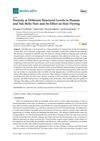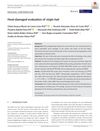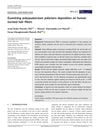7 citations
,
September 2020 in “International Journal of Cosmetic Science” Different sizes of keratin peptides can strengthen hair, with smaller ones possibly increasing volume and larger ones repairing damage.
 6 citations
,
May 2020 in “Molecules/Molecules online/Molecules annual”
6 citations
,
May 2020 in “Molecules/Molecules online/Molecules annual” Yak belly hair has higher porosity and is less stiff than human hair, making it absorb dye better but less suitable as a direct substitute for hair dyeing.
 13 citations
,
March 2019 in “Journal of cosmetic dermatology”
13 citations
,
March 2019 in “Journal of cosmetic dermatology” Heat damages hair, with Asian hair losing more protein than Caucasian hair.
 4 citations
,
November 2017 in “Journal of Cosmetic Dermatology”
4 citations
,
November 2017 in “Journal of Cosmetic Dermatology” Certain polymers can stick to hair and increase volume, working best at a pH of 7 to 9.
2 citations
,
September 2013 in “日本香粧品学会誌” The study investigated the effects of heat treatment on human hair keratin films and hair samples, focusing on color change, morphology, protein solubility, and oxidative proteins. It was found that keratin films changed color from opaque white to yellow/light brown at temperatures above 170°C, with little morphological change observed even at 200°C. Protein solubility decreased with increased heating time and temperature, showing a linear relationship between solubilized proteins and temperatures from 110 to 160°C. The keratin films exhibited more pronounced changes compared to hair samples, with increased carbonylated proteins at 120–180°C, suggesting that heat promotes protein oxidation and the formation of a "Stable Structure." The study concluded that keratin films could be used to quantitatively evaluate hair thermal damage.
3 citations
,
May 2009 in “International Journal of Cosmetic Science” Relaxer treatments damage African–American hair, with commercial products causing more harm than lab-made solutions.


